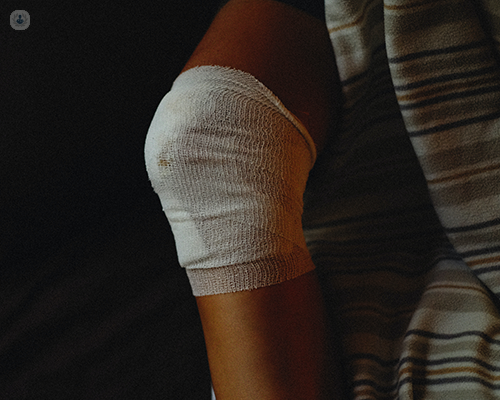When is the right time for ACL surgery? Key factors to consider
Autore:Deciding when to undergo ACL surgery is a complex and personal decision. An ACL tear is a common injury, especially among athletes, and while some people can manage it with physiotherapy, others will require surgery to regain knee stability and prevent long-term damage.
Mr Sam Nahas, renowned consultant orthopaedic knee surgeon, provides an expert insight into ACL surgery, exploring key considerations, the procedure involved, as well as expected recovery times.

What is an ACL injury, and how does it occur?
The ACL (anterior cruciate ligament) is one of the four major ligaments in the knee, responsible for stabilising the joint and preventing excessive forward movement of the tibia (shin bone) in relation to the femur (thigh bone). It also helps control rotational movements in the knee.
ACL injuries typically occur during activities that involve: sudden stops or changes in direction; jumping and landing awkwardly; direct blows to the knee; hyperextending the knee. These injuries can range from partial tears to complete ruptures, often accompanied by a popping sound, immediate pain, swelling, and instability in the knee.
When is ACL surgery necessary?
Not every ACL tear requires surgery. In some cases, ACL injuries can be managed non-surgically with physiotherapy or bracing.
The decision to undergo ACL surgery will depend on your lifestyle, activity level, and the severity of your injury. Common indications include:
- Severe tears: Complete tears or cases where the knee remains unstable despite rehabilitation.
- Active lifestyle: People who regularly participate in sports or physically-demanding activities will require surgery to regain full knee function.
- Knee instability: If the knee consistently gives way during normal activities, surgery will be recommended to prevent further damage.
- Secondary damage: In cases where the ACL tear is accompanied by damage to other knee structures (like the meniscus or cartilage), surgery is often necessary.
How is ACL surgery performed?
ACL surgery, also known as ACL reconstruction, is a surgical procedure to replace the torn ligament with a tissue graft. The procedure is carried out under either general anaesthesia or spinal anaesthesia. Before surgery, you will be given exercises to strengthen the knee to improve recovery.
On the day of the procedure, your orthopaedic surgeon will make small incisions around the knee to insert an arthroscope (a small camera that provides a clear view of the inside of your knee on a monitor). Your surgeon will inspect your knee joint to confirm the damage to the ACL and check for any other injuries, like cartilage or meniscus tears, which may also need treatment.
The next step is to obtain a graft to replace the damaged ACL, which can come from your own tissue (autograft) or a donor tissue (allograft). If your own tissue is used, your surgeon will make another small incision to access the donor area, typically the hamstring or patellar tendons, to harvest the graft.
Your surgeon will then remove the remnants of the torn ACL from your knee joint using small surgical instruments inserted through the arthroscopic incisions. To secure the new graft, your surgeon will drill two small tunnels or sockets in the bones of your knee: one in the femur and one in the tibia. These tunnels will act as anchors for the graft, positioning it in place to mimic the original ACL's structure.
Subsequently, your surgeon will thread the graft through the bone tunnels, positioning it where the original ACL used to be. The graft will be fixed in place using screws or other fixation devices at each end of the tunnel to hold it securely. Once the graft is in place, your surgeon will test the knee to ensure it’s stable and the graft is properly positioned.
Your surgeon will remove the arthroscope and surgical tools, and then close the incisions with stitches or surgical glue. A sterile dressing will be applied to cover the knee.
What is the recovery time like after ACL surgery?
ACL surgery typically takes between 1 to 2 hours. After the surgery, you will be taken to a recovery room where you will be monitored as the anaesthesia wears off. You will usually go home the same day of the procedure or the next morning, with crutches to help you move around. It’s common to experience pain and swelling during the immediate post-surgery phase, but this will be managed with medication, ice, and elevation.
A rehabilitation programme will start shortly after your ACL surgery to help restore movement, build strength, and improve flexibility in your knee. As the knee heals, the rehabilitation exercises will focus on regaining stability and balance to prepare for daily activities and return sports.
The average full recovery time is 6 to 12 months, depending on the extent of your injury and your rehabilitation progress. For athletes, it will take 9 to 12 months to return to high-level sports or physically-demanding activities.
If you would like to book an appointment with Mr Sam Nahas, head on over to his Top Doctors profile today.


